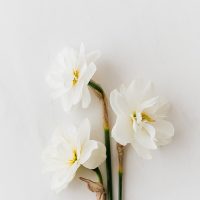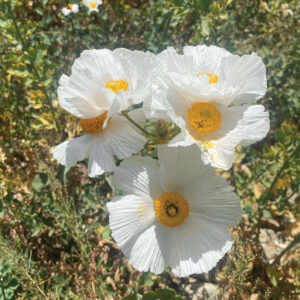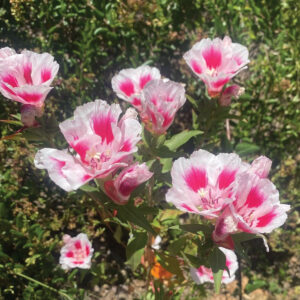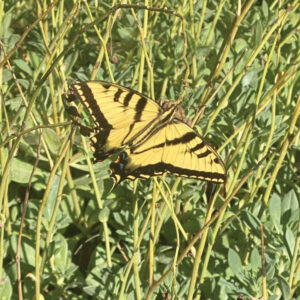It is getting closer to the time of year in the Santa Clarita Valley (and much of Southern California) that may bring frost. It is time to become acquainted with how to handle your garden.
There are warning signs for frost such as still air (tree branches aren’t moving) no cloud cover, low humidity, and temperatures 45 degrees or less at 10 PM. Check before bedtime and get any at-risk container plants under the eaves, a patio roof or into the garage. This works for most plants however not your potted tropicals.
If you have tropical plants, remember that “cold” starts at 55 degrees. You can create your own problems if you suddenly bring tropicals indoors. Waiting to the last possible day is not the best solution. In fact… it’s the worst. An important trick is gradually adjust your plants to indoor conditions. *** See notes below
Make sure the soil around plants is moist when frost is expected. Soil that is moist holds and releases more heat than dry soil that creates a humid environment around the plant when the frost sucks moisture from the leaves. Never hose down plants in the morning after a frost plants should thaw naturally and gradually, or the plant cells in the leaf tissue will rupture.
You can also help protect plants by adding a two-inch layer of mulch. The mulch will help the soil retain moisture (less likely to freeze) and will insulate the roots from the cold.
Tender plants can be covered with frost cloth. The material should be secured to frames or stakes so that it does not touch the plant, otherwise it will just transfer the cold. It is important to remove the coverings during the daytime so that the plants can absorb sunlight.
Be sure not to prune frost sensitive plants until after all danger of frost has passed. Let the frost do the pruning for you. If your plant is injured, leave the damaged, burnt looking leaves on the plant to protect the foliage underneath. If you prune prematurely you may stimulate new growth, which is tender and more likely to be damaged by later frosts. Do not start pruning your plant again until danger of frost has passed and new growth begins to appear.
*** Additional notes for acclimating Tropicals:
You should begin adjusting the light hours for your tropicals at least 3 weeks before you expect to move your plants indoors. Take the outdoor pots and put them in deep shade and keep them there at least one week. The shade signals the plant that it should adapt to lower light conditions. At the same time you should cut back on water. Water the plants just enough to sustain them, especially since keeping them in shade they will require less water anyway.
Do not fertilize the plants… for tropicals your last fertilization can be late summer, you can feed them again in very late winter or early spring. This will be just prior to putting them out again for the spring.
Now you can bring the plants indoors, make sure to keep the water to a minimum the temperatures warm, as much bright light as you can and remember… don’t fertilize. You have done your best, now keep your fingers crossed because even with all that work your plants are not in their ideal surroundings and can expect some yellow leaves and even some loss of leaves. You can also thank yourself for moving to Southern California where the weather will soon be warm enough to put your tropical friends back outside where they enjoy their surroundings.
Visit me at my website: www.thegrassisalwaysgreener.net













